2008.04.22 Run 6 Photon Yield Per Trigger
Run 6 Photon Yield Per Trigger
Introduction
The purpose of this study is to estimate the photon yield per trigger in the Endcap Electromagnetic Calorimeter during Run 6. The trigger of interest is the L2-gamma trigger. Details of the STAR triggers during Run 6 were compiled in the 2006 p+p run (run 6) Trigger FAQ by Jamie Dunlop. The triggers relevant to this study are reproduced in the table below for convenience.
| Trigger id | Trigger name | Description |
| 117641 | eemc-http-mb-l2gamma | EEMC HT > th1 (12, 2.6 GeV) and TP > TH1 (17, 3.8 GeV), minbias condition, L2 Gamma algorithm, reading out slow detectors, L2 thresholds at 2.9, 4.5 |
| 127641 | eemc-http-mb-l2gamma | EEMC HT > th1 (12, 2.6 GeV, run < 7100052;13, 2.8 GeV, run >=7100052) and TP > TH1 (17, 3.8 GeV, run < 710052; 21, 4.7 GeV, run>=7100052 ), minbias condition, L2 Gamma algorithm, reading out slow detectors, L2 thresholds at 3.4, 5.4, transverse running |
| 137641 | eemc-http-mb-l2gamma | EEMC HT > th1 (16, 3.5 GeV) and TP > th1 (20, 4.5 GeV), minbias condition, L2 Gamma algorithm, reading out slow detectors, L2 thresholds at 3.7, 5.2, longitudinal running 2 |
The luminosity sampled by each trigger was also caclulated here by Jamie Dunlop. The luminosity for the relevant triggers is reproduced in the table below for convenience. The figure-of-merit (FOM) is calculated as FOM=Luminosity*PB*PY for transverse runs and FOM=Luminosity*PB2*PY2 for longitudinal runs where PB is the polarization of the blue beam and PY is the polarization of the yellow beam. Naturally, in spin physics, the FOM is the better indicator of statistical precisison.
| Trigger | First run | Last run | Luminosity [nb-1] | Figure-of-merit [nb-1] |
| 117641 | 7093102 | 7096017 | 118.88 | 11.89 |
| 127641 | 7097009 | 7129065 | 3219.04 | 1099.43 |
| 137641 | 7135050 | 7156028 | 4717.10 | 687.65 |
Event selection
Trigger selection
For this study, only the trigger of longitudinal running 2 (137641) is used. As mentioned above, at level-0, an EEMC high tower above 3.5 GeV and its associated trigger patch above 4.5 GeV in transverse energy coupled with a minimum bias condition, which is simply a BBC coincidence to ensure a valid collision, is required for the trigger to fire. The EEMC has trigger patches of variable sizes depending on their location in pseudorapidity. (The BEMC has trigger patches of fixed sizes, 4x4 towers.) At level-2, a high tower above 3.7 GeV and a 3x3 patch above 5.2 GeV in transverse energy is required to accept the event.
Gamma candidates
In addition to selecting events that were tagged online by the L2-gamma trigger, the offline
looks for tower clusters with minimum transverse energy of 5 GeV. These clusters along with their associated TPC tracks, preshower and postshower tiles, and SMD strips form gamma candidates. Gamma trees for the 2006 trigger ID 137641 with primary vertex are located at
/star/institutions/iucf/pibero/2006/gammaTrees/
.
Track isolation
The gamma candidate is required to have no track pointing to any of its towers.
EMC isolation
The gamma candidate is required to have 85% of the total transverse energy in a cone of radius 0.3 in eta-phi space around the position of the gamma candidate. That is E
Tgamma
/E
Tcone
> 0.85 and R=√Δη
2
+Δφ
2
=0.3 is the cone radius.
Jet Reconstruction
The gamma candidate is matched to the best away-side jet with neutral fraction < 0.9 and cos(φ
gamma
-φ
jet
) < -0.8. The 2006 jet trees are produced by Murad Sarsour at PDSF in
/eliza13/starprod/jetTrees/2006/trees/
. A local mirror exists at RCF under the directory
/star/institutions/iucf/pibero/2006/jetTrees/
.
Spin Information
Jan Balewski has an excellent write-up, Offline spin DB at STAR, on how to get spin states. I obtain the spin states from the skim trees in the jet trees directory. In brief, the useful spin states are:
| Blue Beam Polarization | Yellow Beam Polarization | Spin4 |
| P | P | 5 |
| P | N | 6 |
| N | P | 9 |
| N | N | 10 |
Event Summary
| L2-gamma triggers | 730128 |
| Endcap gamma candidates | 723848 |
| Track isolation | 246670 |
| EMC isolation | 225400 |
| Away-side jet | 99652 |
| SMD max sided residual | 19281 |
| Barrel-only jet | 15638 |
Note the number of L2-gamma triggers include only those events with a primary vertex and at least one gamma candidate (BEMC or EEMC).
Gamma-Jet Plots
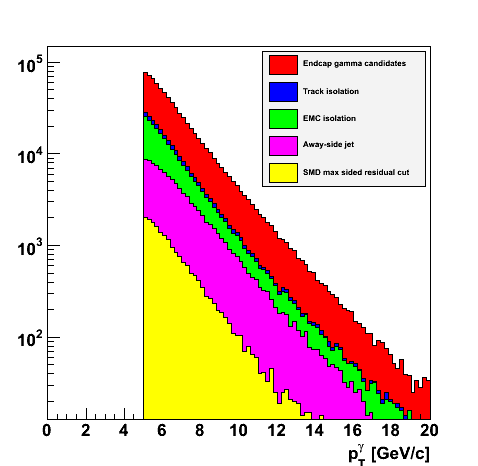 |
 |
|
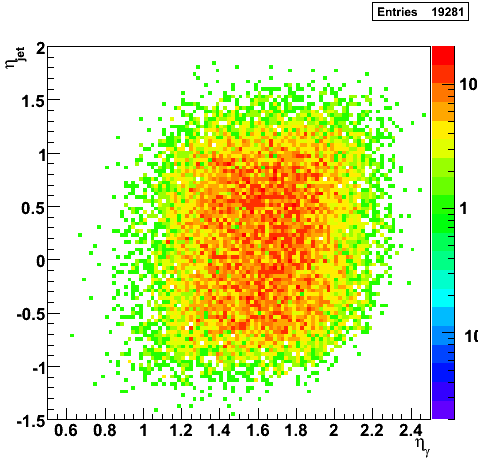 |
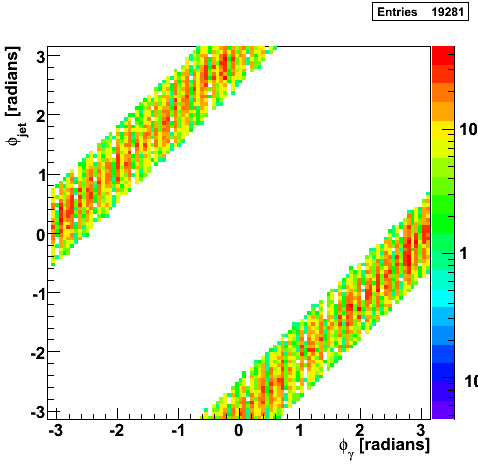 |
Comparison of pT Slope with Pythia
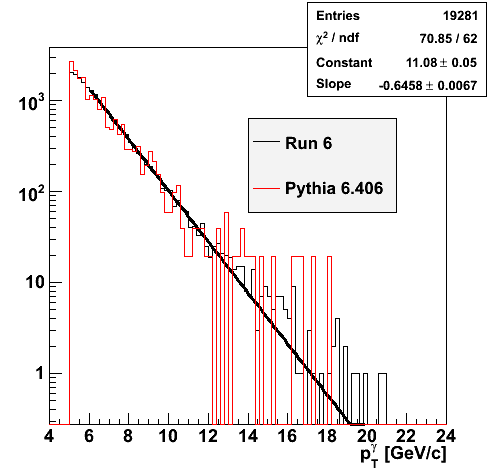 |
 |
Partonic Kinematics Reconstruction

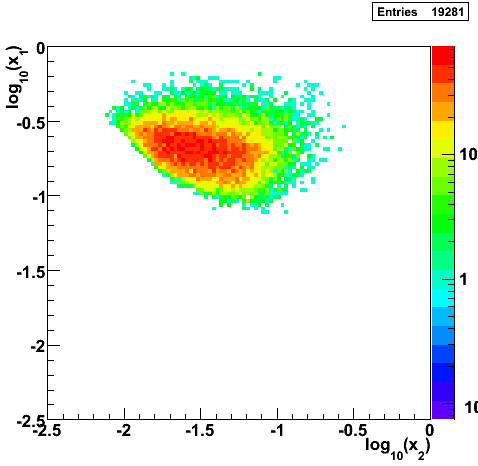 |
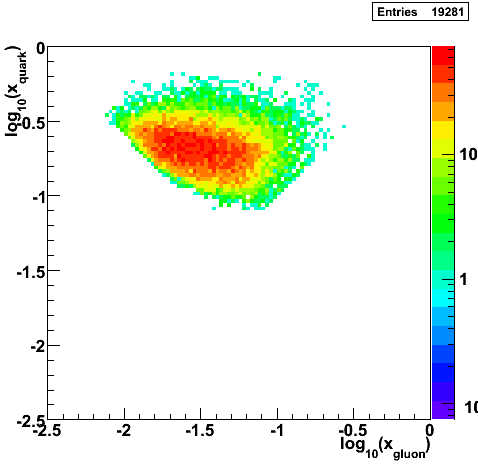 |
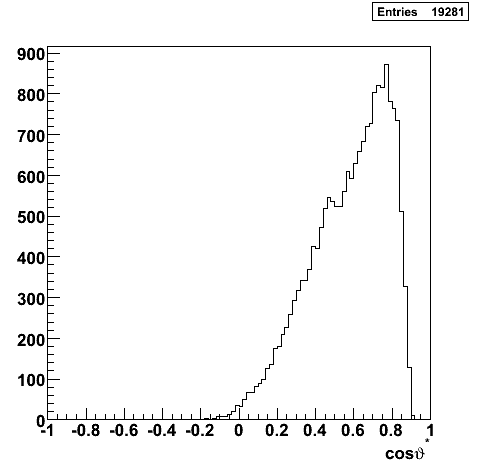 |
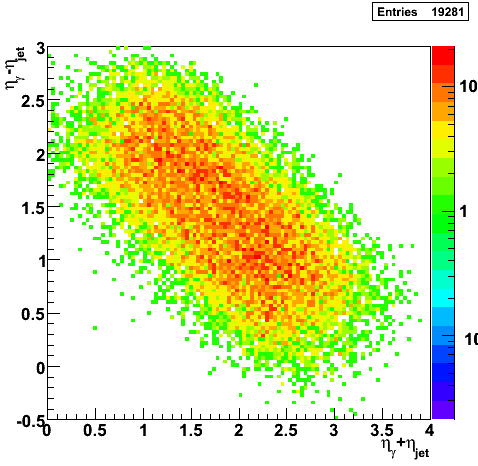 |
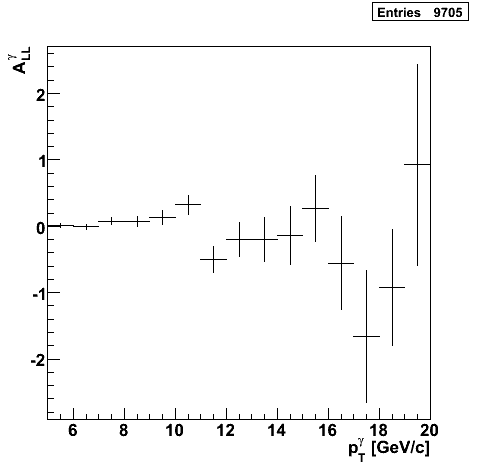 |
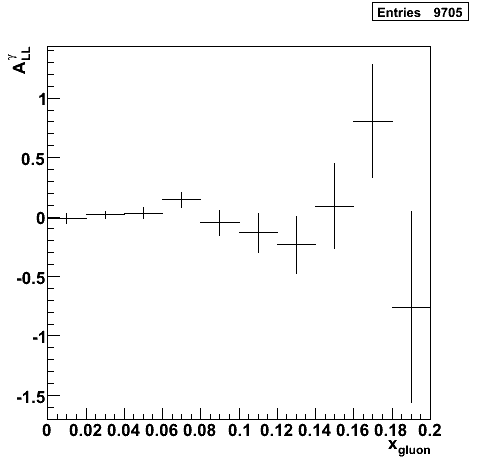 |
Open Questions
- I count ~2.4M events with trigger id 137641 using the Run 6 Browser, however my analysis only registers about ~0.78M.
Pibero Djawotho Last updated Tue Apr 22 11:40:18 EDT 2008